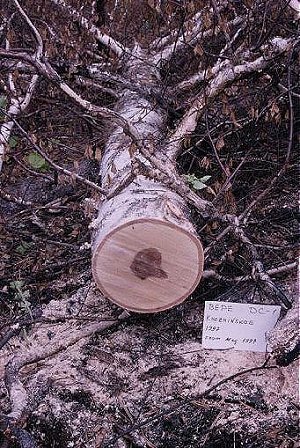
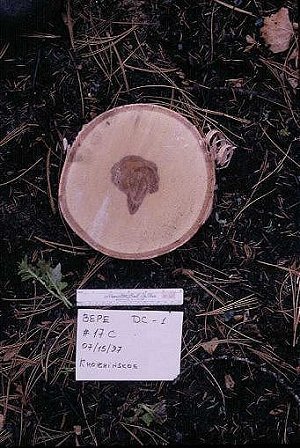

|
Decay class one boles usually have no decay, fine twigs remaining, and complete bark coverage. The sapwood and heartwood are clear or slightly blue stained. Moss is absent. |

|
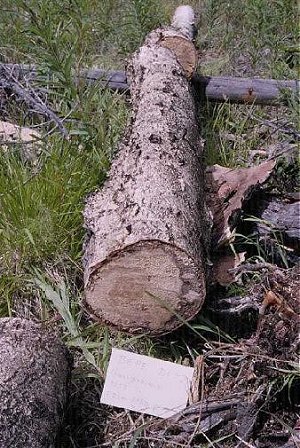
|
Decay class two boles are slightly decayed with all of the bark present but no fine twigs. The sapwood and heartwood show some signs of decay. |
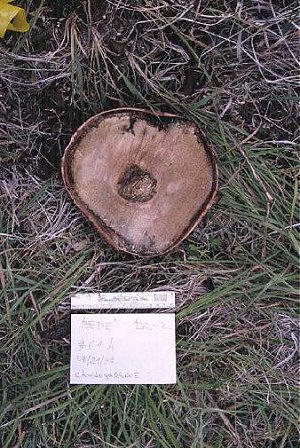
|
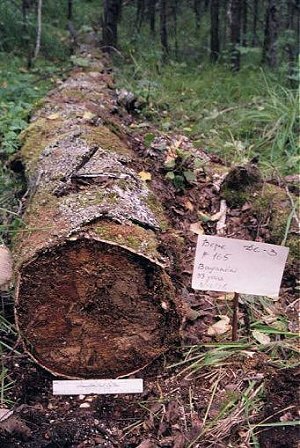
|
Decay class three boles are moderately decayed with almost all of the bark present but only stubs of branches remaining. Where the bark is gone, the decomposition of wood is less apparent. The sapwood and heartwood show strong signs of decay. The bole still can support itself due to presence of outer bark, but breaks easily with the applied force. |
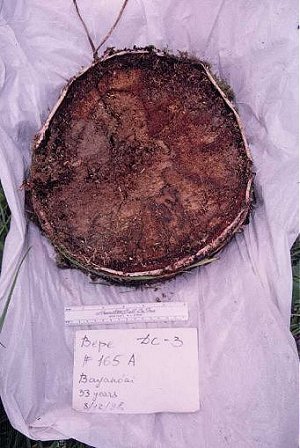
|

|
Decay class four boles can no longer support themselves. Frequently, all the bark is still present. The sapwood and heartwood are impossible to distinguish. |
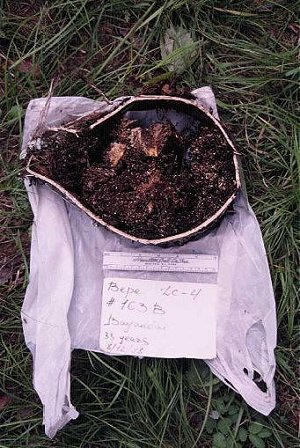
|
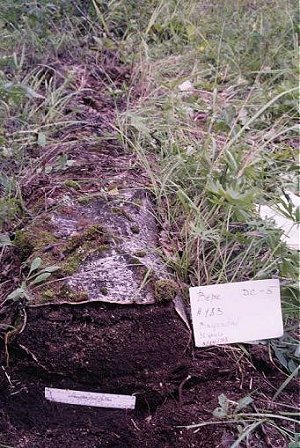
|
Decay class five boles are detected only by their moss or grass outline on the forest floor. The cross section of the bole is no longer round but elliptical, and the most of the bark is still present. The wood resembles soil alike compound with little discernible structure or sign of rings penetrated by roots. |

|
Return to the top of this page.